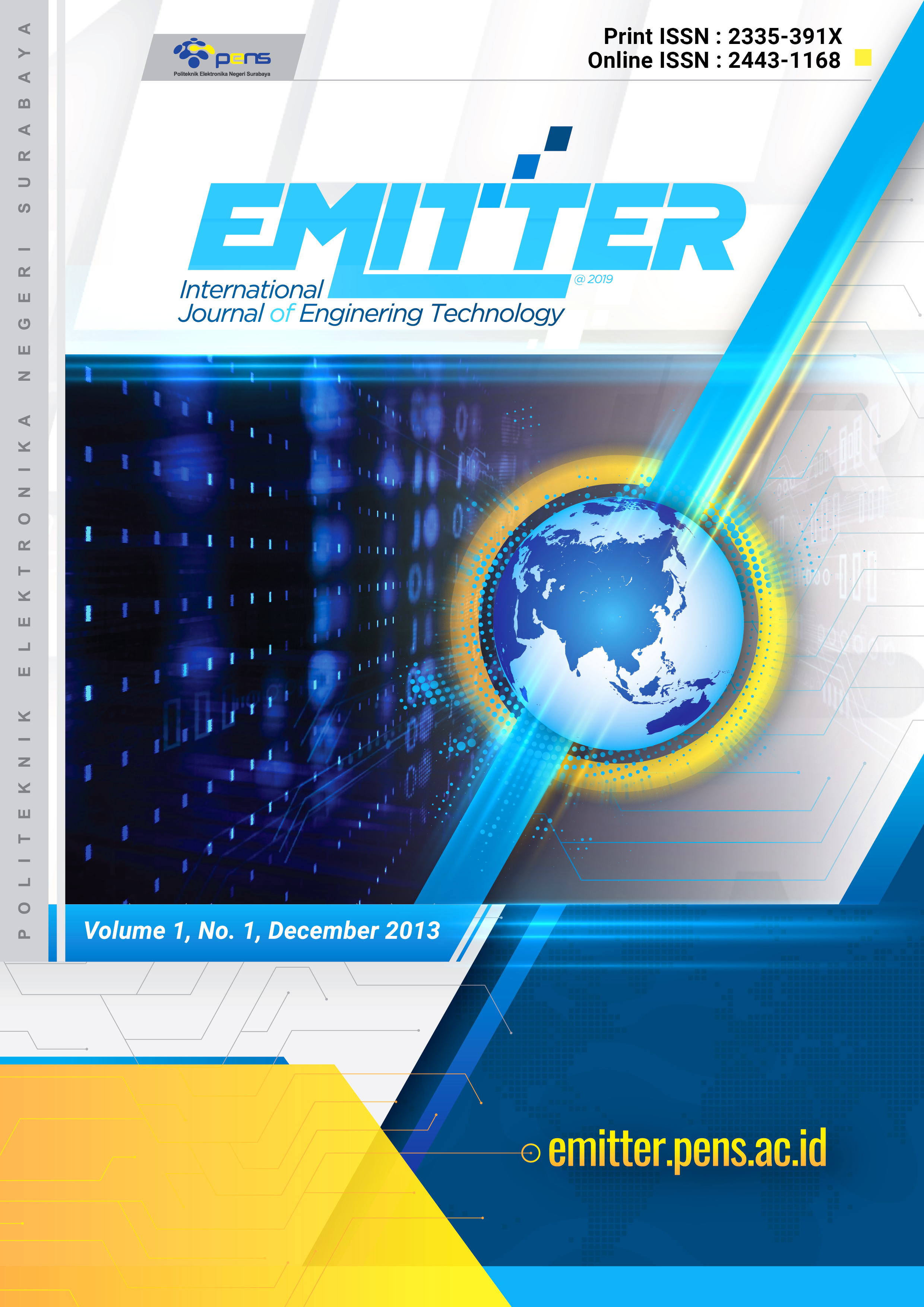Implementation and Analysis Audio Steganography Used Parity Coding for Symmetric Cryptography Key Delivery
Abstract
In today's era of communication, online data transactions is increasing. Various information even more accessible, both upload and download. Because it takes a capable security system. Blowfish cryptographic equipped with Audio Steganography is one way to secure the data so that the data can not be accessed by unauthorized parties. In this study Audio Steganography technique is implemented using parity coding method that is used to send the key cryptography blowfish in e-commerce applications based on Android. The results obtained for the average computation time on stage insertion (embedding) the secret message is shorter than the average computation time making phase (extracting) the secret message. From the test results can also be seen that the more the number of characters pasted the greater the noise received, where the highest SNR is obtained when a character is inserted as many as 506 characters is equal to 11.9905 dB, while the lowest SNR obtained when a character is inserted as many as 2006 characters at 5,6897 dB .
Keywords: audio steganograph, parity coding, embedding, extractin, cryptography blowfih.
Downloads
References
Brahim Wijaya, Implementation And Analysis Of Steganography Using Parity Coding In E-Commerce, Proyek Akhir Politeknik Elektronika Negeri Surabaya, 2012.
Herianto, Pembangunan Perangkat Lunak Steganografi Audio MP3 dengan Teknik Parity Coding pada Perangkat Mobile Phone, Proyek Akhir Institut Teknologi Bandung, 2008.
Mike Drogalis, Dylan Reeder, The Blowfish Cipher, Oktober 2012.
Marvel, L.M., C.G. Boncelet, Jr., dan C.T. Retter, Spread Spectrum Image Steganography, Image Processing, IEEE Transactions , Vol. 8 , Issue: 8 , 1998.
Putri Alatas, Implementasi Teknik Steganografi Dengan Metode LSB Pada Citra Digital, Proyek akhir Universitas Gunadarma Jakarta, 2009.
Riko Arlando Saragih, Metode parity Coding Versus Metode Spread Spectrum pada Audio Steganography, Proyek Akhir Universitas Kristen Maranatha Bandung, Bandung, Juni 2006.
The copyright to this article is transferred to Politeknik Elektronika Negeri Surabaya(PENS) if and when the article is accepted for publication. The undersigned hereby transfers any and all rights in and to the paper including without limitation all copyrights to PENS. The undersigned hereby represents and warrants that the paper is original and that he/she is the author of the paper, except for material that is clearly identified as to its original source, with permission notices from the copyright owners where required. The undersigned represents that he/she has the power and authority to make and execute this assignment. The copyright transfer form can be downloaded here .
The corresponding author signs for and accepts responsibility for releasing this material on behalf of any and all co-authors. This agreement is to be signed by at least one of the authors who have obtained the assent of the co-author(s) where applicable. After submission of this agreement signed by the corresponding author, changes of authorship or in the order of the authors listed will not be accepted.
Retained Rights/Terms and Conditions
- Authors retain all proprietary rights in any process, procedure, or article of manufacture described in the Work.
- Authors may reproduce or authorize others to reproduce the work or derivative works for the author’s personal use or company use, provided that the source and the copyright notice of Politeknik Elektronika Negeri Surabaya (PENS) publisher are indicated.
- Authors are allowed to use and reuse their articles under the same CC-BY-NC-SA license as third parties.
- Third-parties are allowed to share and adapt the publication work for all non-commercial purposes and if they remix, transform, or build upon the material, they must distribute under the same license as the original.
Plagiarism Check
To avoid plagiarism activities, the manuscript will be checked twice by the Editorial Board of the EMITTER International Journal of Engineering Technology (EMITTER Journal) using iThenticate Plagiarism Checker and the CrossCheck plagiarism screening service. The similarity score of a manuscript has should be less than 25%. The manuscript that plagiarizes another author’s work or author's own will be rejected by EMITTER Journal.
Authors are expected to comply with EMITTER Journal's plagiarism rules by downloading and signing the plagiarism declaration form here and resubmitting the form, along with the copyright transfer form via online submission.



